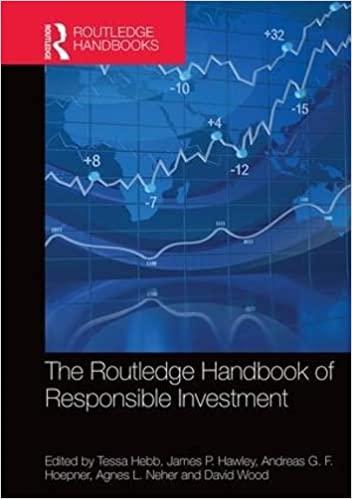Question
Smith Data Analytics Inc. has decided to acquire a new market data and quotation system for its Chicago home office. The system receives current market
Smith Data Analytics Inc. has decided to acquire a new market data and quotation system for its Chicago home office. The system receives current market prices and other information from several on-line data services, then either displays the information on a screen or stores it for later retrieval by the firm's brokers. The system also permits customers to call up current quotes on terminals in the lobby. The equipment costs $1,000,000, and, if it were purchased, Smith could obtain a term loan for the full purchase price at a 10 percent interest rate. Although the equipment has a six-year useful life, it is classified as a special-purpose computer, so it falls into the MACRS 3-year class. If the system were purchased, a 4-year maintenance contract could be obtained at a cost of $20,000 per year, payable at the beginning of each year. The equipment would be sold after 4 years, and the best estimate of its residual value at that time is $200,000. However, since real-time display system technology is changing rapidly, the actual residual value is uncertain. As an alternative to the borrow-and-buy plan, the equipment manufacturer informed Smith that Consolidated Leasing would be willing to write a 4-year guideline lease on the equipment, including maintenance, for payments of $260,000 at the beginning of each year. Smith's marginal federal-plus-state tax rate is 40 percent. You have been asked to analyze the lease-versus-purchase decision, and in the process to answer the following questions: a. (1) What is the present value cost of owning the equipment? (Hint: Set up input data area. Set up a time line which shows the net cash flows over the period t = 0 to t = 4, and then find the PV of these net cash flows, or the PV cost of owning.) a. (2) What discount rate did you use? Explain the rationale for the discount rate you used to find the PV. b. What is Smith's present value cost of leasing the equipment? (Hint: Again, construct a time line.) c. What is the net advantage to leasing (NAL)? Does your analysis indicate that Smith should buy or lease the equipment? Explain. d. Now assume that the equipment's residual value could be as low as $0 or as high as $400,000, but that $200,000 is the expected value. Since the residual value is riskier than the other cash flows in the analysis, this differential risk should be incorporated into the analysis. Describe how this could be accomplished. (No calculations are necessary, but explain how you would modify the analysis if calculations were required.) What effect would increased uncertainty about the residual value have on Smith's lease-versus-purchase decision? e. (1) Assume that the lease payments were actually $280,000 per year, that Consolidated Leasing is also in the 40 percent tax bracket, and that it also forecasts a $200,000 residual value. Also, to furnish the maintenance support, Consolidated would have to purchase a maintenance contract from the manufacturer at the same $20,000 annual cost, again paid in advance. Consolidated Leasing can obtain an expected 10 percent pre-tax return on investments of similar risk. What would Consolidated NPV and IRR of leasing be under these conditions? e.(2) What do you think the lessor's NPV would be if the lease payments were set at $260,000 per year? (Hint: The lessor's cash flows would be a "mirror image" of the lessee's cash flows.) *can this be answered using excel tables*
Step by Step Solution
There are 3 Steps involved in it
Step: 1

Get Instant Access to Expert-Tailored Solutions
See step-by-step solutions with expert insights and AI powered tools for academic success
Step: 2

Step: 3

Ace Your Homework with AI
Get the answers you need in no time with our AI-driven, step-by-step assistance
Get Started


